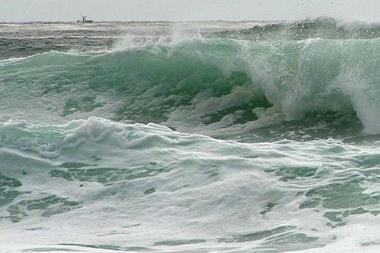John Brown, director of supply chain risk management at Coca-Cola Company answers our questions on supply chain risk
Can you tell us about your role at the Coca-Cola Company?
I joined in April 2008 with the charge to develop and deploy a risk management programme across the end-to-end supply chain - and that’s what I’ve been doing for the last three years.
Supply chains have always been a rather complex part of risk management. What complications do they entail today?
What happened in the past decade is that most companies have, in their effort to become as efficient as possible, established a more brittle supply chain with very little flexibility. The interconnectivity among suppliers is so high that an event happening anywhere has consequences all over the world.
We can see that very clearly in events after the Japan earthquake and resulting nuclear power problems - most specifically in the electronics industry. From what I understand, around 40% of the world’s capacity for making the silicon wafers that go into electronics were made in Japan, and that plant was damaged severely during the earthquake. That had ripple effects for any industry that used electronic components.
Are there any recent disruptions that you have had to struggle with?
Part of the beauty of the beverage industry is that most of the risk is distributed because products are made locally. But, as with anyone in the food industry, we felt some impacts from the fear of radiation contamination of food that was being imported from, or exported to, Japan.
You are a member of the Supply Chain Risk Leadership Council, which has recently launched its Best Practices Guide. How did you become involved in this project?
When I started at Coca-Cola, a company with a complex series of supply chains, I felt that even though I had a very good foundation in risk management I would benefit from seeing what other large global companies were doing. In my investigation I saw that the Supply Chain Risk Leadership Council had, in my mind, the best vision - so I applied to become a member. I’ve had the honour of chairing this group in 2011.
You have described the first version of the Best Practices Guide as “just a starting point”. What do you expect to achieve with the guide in the future?
The Supply Chain Leadership Council is a fully voluntary organisation. People are in it because they want to be, and by the same token we are limited in the amount of time we can dedicate. So we realise that by putting together this first edition of the guide we have established what is probably 80% of what
I would call a first-class document.
As we get the document out, we want to learn from those who are using it. We know there are probably many best practices that we have not yet included in the document. Our plan is to continue to evolve this, hopefully with annual updates.
Our underlying reason for doing this is of course selfish: the better we can spread best practices across all industries and across the world, the better our own companies will be protected from disruption.
Do you see a high demand for such a document?
There are a few books on supply chain risk management written by some esteemed professors, but they only focus on specific examples. We try to build an overarching framework for risk management and then combine it with the elements of business continuity planning, crisis management and emergency response and tie it into a nice package that anybody in any industry can use.
As an expert in the field, can you offer any advice on what to look out for right now in supply chain risks?
I think the biggest gap right now is to be able to see the physical flow of material through the supply chain from suppliers all the way to consumers. Most data systems in companies will identify the supplying company, but they don’t capture the ship-from and ship-to location.
Can we expect any innovation in that area soon?
There’s some really good work being done right now. The project I’m most familiar with is by MIT. They are working with companies to identify what data exists within their systems, figure out how they can pull that information out and then fill in the additional data points that they need, which are primarily going to be the ship-from and ship-to locations. Then they visualise that.
It doesn’t matter so much what you have spent on an item, but more on what kind of value that item would affect if it were not available. This work is about being able to create a visual map of a supply chain and be able to see where value is affected.



















No comments yet